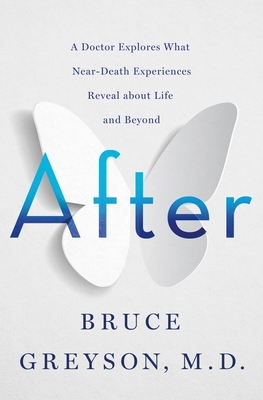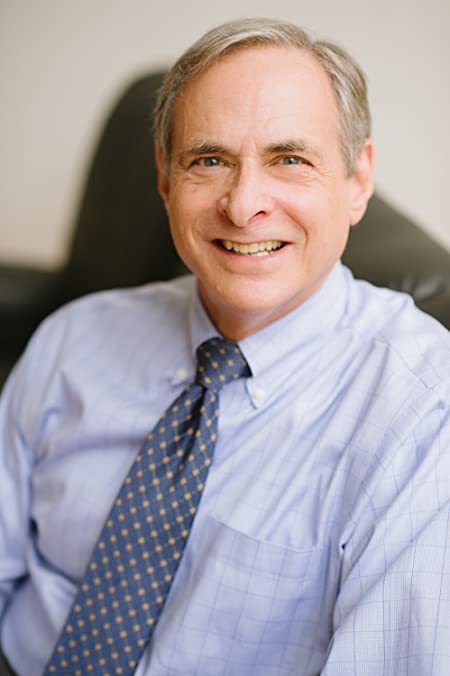Agnostic Psychiatrist Says Near-Death Experiences Are Real
They change lives but he is unsure what they meanPsychiatrist Bruce Greyson, emeritus at the University of Virginia, tells us that he first started thinking about near-death experiences many decades ago when a young woman, rescued from suicide, asserted that she had seen a spaghetti stain on his tie during an out-of-body experience. She could not have known that he had gone to considerable pains to conceal the embarrassing mark from colleagues.

Nothing in his background had prepared him, as a young psychiatrist, for taking seriously the possibility that the mind could be detached from the brain. He grew up with a chemist father who had a great love for science but no metaphysical convictions. But he just could not forget the spaghetti stain episode and that background prompted him to study near-death experiences (NDEs) from a science perspective. He went on to develop the NDE scale for assessing such experiences, a scale that met the standards for professional diagnostics. His new book After (St. Martin’s, 2021) is the outcome of a lifetime of study.
Needless to say, he sometimes found himself in a rather difficult position with colleagues. But he fought back: “Far from leading us away from science and into superstition, NDE research actually shows that by applying the methods of science to the nonphysical aspects of our world, we can describe reality much more accurately than if we limit our science to nothing but physical matter and energy.” Having no particular religious convictions, he is willing to entertain the idea that NDEs may be brought on by “physical changes in the brain.” But he is also willing to consider the possibility that “the mind may be able to function independent of the brain.”
We all know which of these two theses would get him in more trouble with the current research establishment. From a generally agnostic perspective, he is prepared to stand behind a number of research findings that would not please materialists:
NDEs are more common than we might have expected (for example, in research studies, 10% of people whose hearts stopped reported them). People have NDEs whether or not they believe in them. As we might expect, they use “whatever cultural or religious metaphors they have available in order to describe things that don’t have familiar labels” (p. 47) but many interview subjects simply had difficulty finding words to describe their experiences.
NDE experiencers tend to report that time slows down and that their senses are greatly sharpened. “More than 80 percent of the experiencers who’ve participated in my research report having had a sense of being outside their physical bodies.” More than two-thirds encountered at least one other person. Many undergo a “life review” where, for example, they see their actions from the perspective of others. Almost all become convinced that there is life after death.

They tend to change their lives as a result, generally coming to value relationships much more than possessions. The NDEs that were frightening or distressing tend to be taken as invitations to “turn their lives around,” which includes ceasing suicide attempts. Greyson summarizes, “If you take only one thing from this book, I would want you to appreciate the transformative power of these experiences to change people’s lives.” (p. 164).
So far, it is encouraging but subjective. However, NDEs do not appear to be wholly subjective. Significantly, some experiencers can accurately describe their surroundings while clinically dead:
Counseling professor Jan Holden reviewed ninety-three reports of out-of-body perceptions during NDEs. She found that 92 percent were completely accurate, 6 percent contained some error, and only 1 percent were completely erroneous. The fact that any out-of-body perceptions are accurate should be enough to make us scratch our heads. (p. 72)
Curiously, some experiencers reported meeting recently deceased people who were not known to have died. The fact was only discovered later.
Verified NDEs, where the experiencer cites information that is not known or knowable by other means, are a strong argument for the partial independence of the mind from the brain.
Attempts to easily discredit NDEs have not gone as expected because, thanks to modern medicine, many more accounts are available to researchers. Conclusions can be drawn from large databases. For example, according to clinical research, people with mental problems do not have more NDEs than others, nor do epileptics. No one part of the brain is especially active (there is no “God spot” in the brain). Memories of NDEs are processed as if they were real events rather than fantasies or imagined events.
The conundrum, of course, is why a person losing vital signs has any experience at all. As Greyson explains,
When the heart stops, breathing also stops, and blood carrying oxygen and fuel no longer flows to the brain. Within ten to twenty seconds, there is no detectable electrical activity in the brain. The person is then considered clinically dead. People who survive such a crisis generally don’t have clear thoughts and perceptions during the period when their hearts stopped. And after they are revived, they have no memories of the time they were unconscious. And yet, 10 to 20 percent of such people remember vivid and detailed NDEs that occurred while their hearts were stopped, and some experiencers accurately report events that occurred during that time. (p. 119).
Again, the best and simplest explanation is the elephant in the room: The mind is not merely what the brain does, as is so often claimed.
It’s not all sweetness and light, either. Greyson, much to his credit, reveals some jarring facts about NDEs. Many experiencers do not recover well from them. They can be angry or despondent at still being alive. And NDEs routinely wreck relationships:
Some experiencers have difficulty reconciling their NDEs with their religious beliefs. Some find it hard to resume their old roles and lifestyles, which no longer have the same meaning, or to communicate to others the impact of the NDE. Some experiencers report anger at still being alive— or at being alive again.” (p. 194). “Researchers in the United States and in Australia have found that marriages in which one partner has had an NDE are less well-adjusted and less stable than they were before the NDE, with 65 percent ending in divorce. This marital instability is usually attributed to problems communicating about a couple’s challenges, disagreements on roles, and dissimilar values and goals. (p. 204).
His own wife worried, Greyson tells us, when he went off the NDE conferences, whether she would get back the same man. “And I must admit that sometimes I wondered that as well,” he admits, doubtless because things haven’t always gone that way for everyone.
He sums up his work, citing a fact that is hard to explain in materialist terms: “I don’t know whether some kind of continued consciousness after death is the best explanation for NDEs in which experiencers see deceased loved ones no one knew had died. But I don’t have any alternative explanation for the evidence.” (p. 221). He is wise to leave it there just now. The second question becomes, can the topic be researched in comparative peace from materialist enforcers?
The book is lucidly written, with many case histories. I offer one caution — well, a note more than a caution: The experiencers’ accounts that Greyson collected feature a very similar, quite literate style. I don’t think that means that the accounts were made up. For one thing, the content is similar to that of thousands of other NDEs. Making them up would be superfluous. More significantly, the stylistic effect is not most apparent in the most remarkable accounts so there does not appear to be an agenda. An old editor myself, I suspect an editorial hand in the matter, with the generous purpose of making many experiencers sound more literate than they perhaps otherwise would.
In the absence of a good reason to doubt the general pattern of the findings, that’s just a quibble. If there are more books like this and they gain a wide hearing, the world will soon become less comfortable for hard-core materialism.
Note: This review of Bruce Greyson, After (St. Martin’s Publishing Group, 2021) was originally published in print in Salvo 58.
You may also wish to read: Newfound respect in science literature for near-death experiences For example, when people claim that they could see colors not normally available to humans, there is at least a possible science basis for that.
